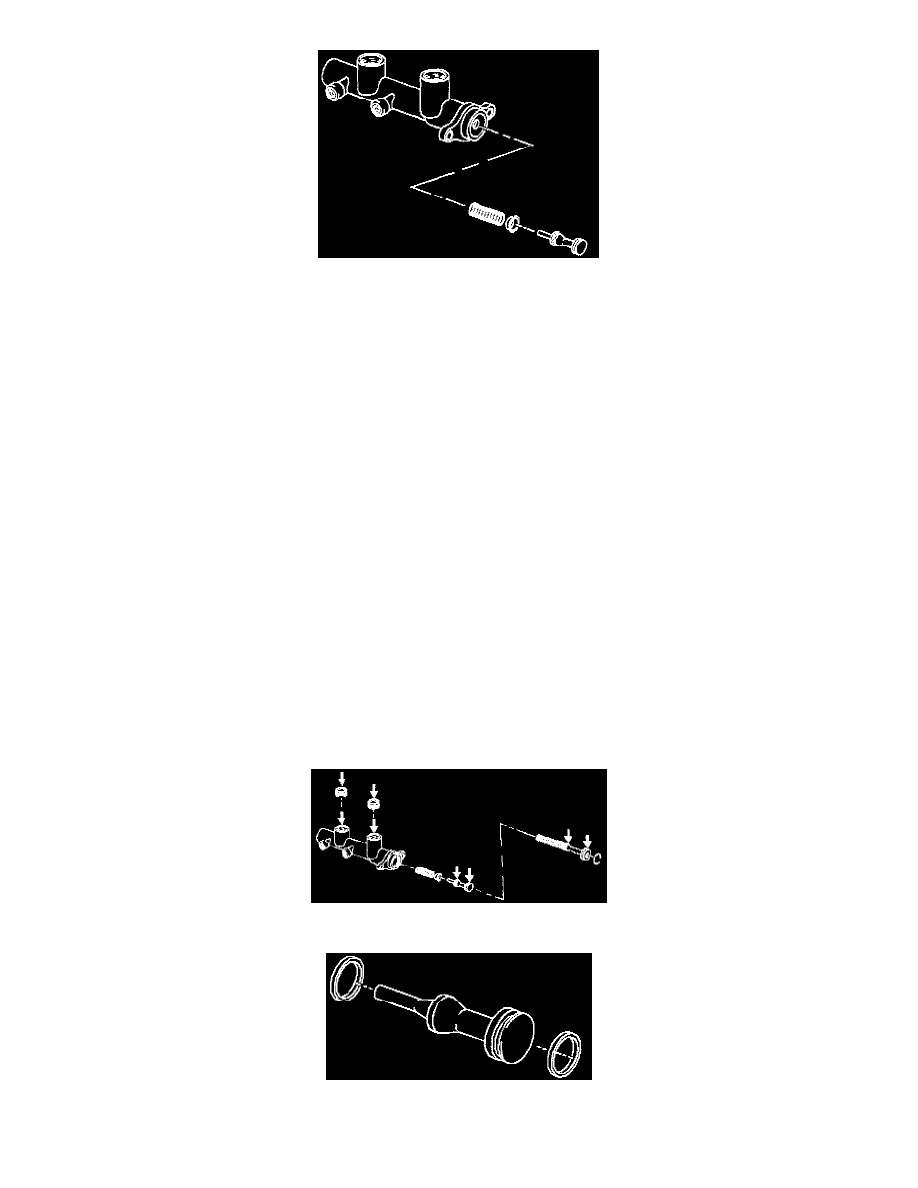Hombre S Regular Cab 2WD L4-2.2L CPC (1998)

7. Remove the primary piston assembly from the master cylinder body
CAUTION: If air pressure is used to remove the secondary piston, place the open end of the cylinder bore approximately 25 mm (1 inch) from a
padded workbench or other surface to catch the piston when it comes out of the bore. Apply low air pressure very carefully to ease the piston out
of the bore. Never point the open end of the bore at anyone when applying air pressure. The piston may come out of the bore with considerable
force and cause personal injury.
8. Remove the secondary piston from the master cylinder body.
Plug the rear port. Apply a small amount of air pressure to the front port.
9. Remove the seals.
10. Remove the spring retainer and the spring from the master cylinder body.
Cleaning Procedure
NOTICE: Use approved solvents only when cleaning or flushing the master cylinder and related components. The use of these liquids as cleaning
solvent will damage the rubber parts in the system if they have any trace of mineral oil or other contaminants.
Clean all the parts using the following procedure:
-
Clean the metal parts in denatured alcohol.
-
Clean the rubber parts in clean brake fluid.
Inspection Procedure
-
Check the diaphragm for cuts, cracks, or swelling.
-
Inspect the cylinder bore for scoring or corrosion.
-
Replace the master cylinder if corrosion is present.
-
Do not attempt to hone the cylinder bore.
-
Check the reservoir for cracks.
Assembly Procedure
1. Lubricate the grommets, seals, and the cylinder bore with clean brake fluid.
2. Use new seals when assembling the master cylinder.
3. Install the spring.
4. Install the spring retainer.
